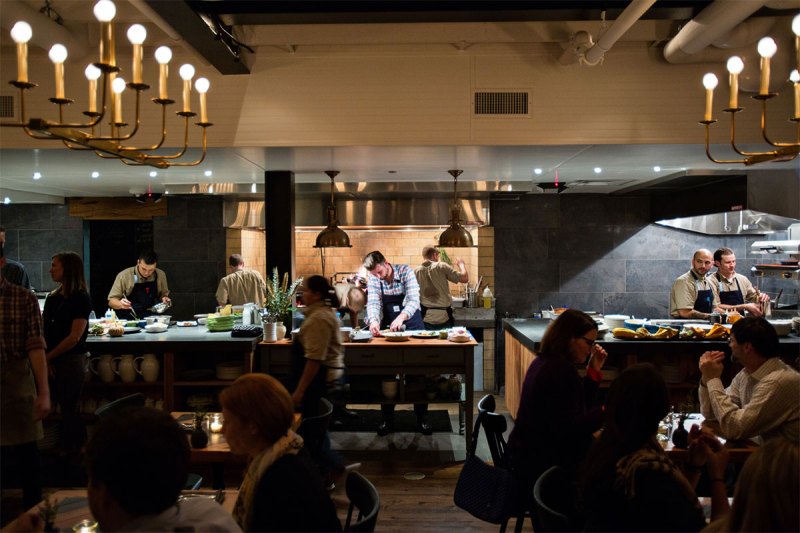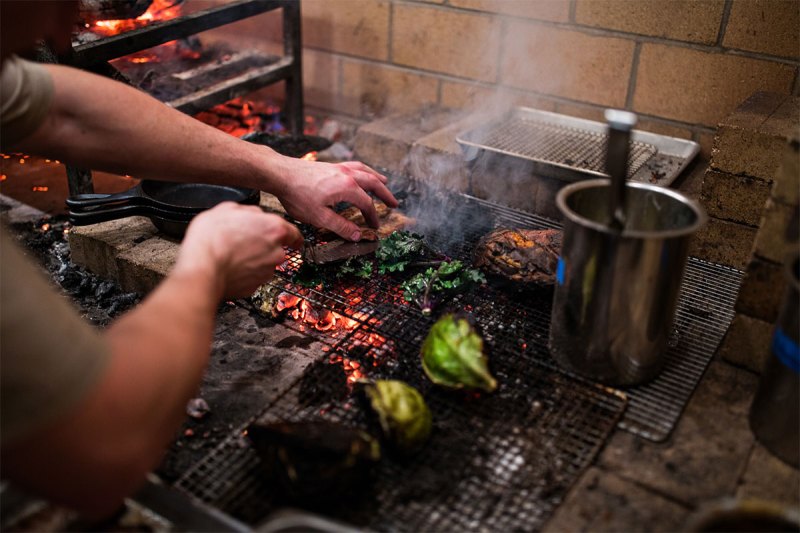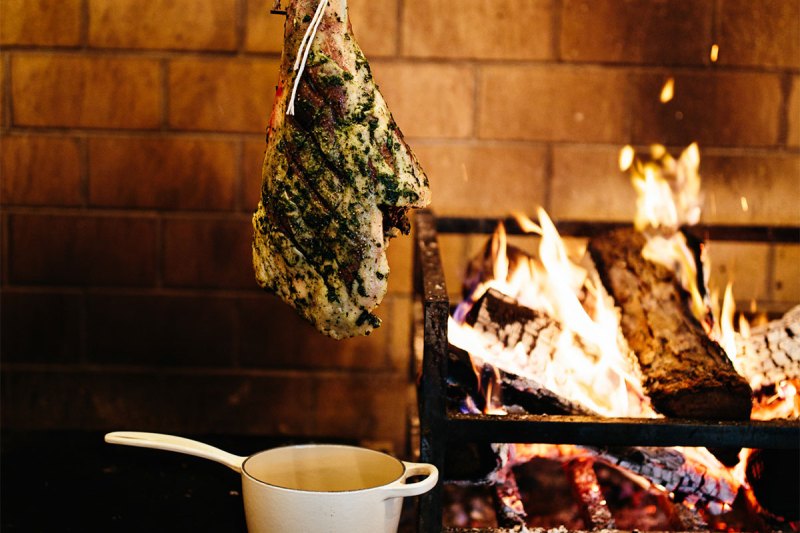
The Dabney in Washington, DC is one of the city’s most impressive restaurants, and that’s not just because it has a Michelin star. Its owner and chef Jeremiah Langhorne, has revolutionized the culinary world with his emphasis on Mid-Atlantic recipes, flavors, and ingredients.
He’s achieved an incredible amount in the relatively short number years he’s been a professional chef: most notably moving from intern to chef de cuisine at Charleston, South Carolina’s acclaimed McCrady’s Tavern and completing a two-month internship in Denmark. And now he has a restaurant of his own, The Dabney, a 2016 semi-finalist for James Beard Foundation Award for Best New Restaurant and proud owner of that Michelin star.
Chef Langhorne was kind enough to talk to us about his restaurant, his food, and Mid-Atlantic deliciousness.

Can you give us a sense of what Mid-Atlantic cooking is? What are some of its influences?
I would describe Mid-Atlantic cooking as a representation of the area, which includes Virginia, Maryland, and the Chesapeake Bay Watershed. It’s heavily influenced by the area’s history and by the ingredients from the region.
Is there a dish or an ingredient that typifies Mid-Atlantic culinary tradition?
When I think of Mid-Atlantic ingredients, I think of oysters, crabs, corn, pork and sweet potatoes.
You’ve talked before about using historical recipes: how much updating, if any, do those need for modern palates? How do go about adapting them, making them your own? Do you often find it hard to find their ingredients?
Those recipes would need a lot of updating if you wanted to prepare them exactly. We really just use them as inspiration and then our dishes serve as modern interpretations of those historic
You grow a lot of things onsite at The Dabney and are dedicated to using local, Mid-Atlantic suppliers. How do you find them?
Initially, we had to do a lot of research and visit a lot of farms because we were new to the area and didn’t have many existing relationships with farmers. Now we typically reach out through industry friends or other purveyors who we ask for recommendations.
Can you tell us about The Dabney’s impressive pantry and what you can/preserve?
The pantry forms the backbone of our cuisine during the winter months. It includes anything and everything that can be preserved in any way, shape, or form. Examples could be tomatoes, hot sauce, Worcestershire sauce, soy sauce, miso, or bay sauce.

At The Dabney you use a hearth to cook a lot of your dishes. Why did you choose this method? Does it create a different flavor or texture than more modern methods? Did it take you a while to master?
We chose the method primarily for the flavor it provides. Cooking over a wood-burning fire adds an incredible amount of flavor. The hearth is a daily struggle to work with and I imagine in ten years I’ll still be trying to figure it out. I have not mastered it. Not even close.
Trust us, he’s got a handle on it. You’re in for an unforgettable meal at The Dabney.



